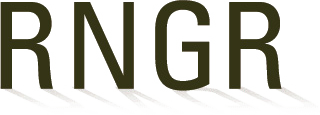
Artemisia (ludoviciana)
|
jtrindle USDA NRCS - Corvallis Plant Materials Center 3415 NE Granger Ave Corvallis, Oregon 58413 (541)757-4812 http://plant-materials.nrcs.usda.gov/orpmc |
|
| Family Scientific Name: | Asteraceae | ||
|---|---|---|---|
| Family Common Name: | Composites; aster family | ||
| Scientific Name: | Artemisia ludoviciana Nutt. | ||
| Common Name: | white sagebrush; sagewort | ||
| Species Code: | ARLU | ||
| Ecotype: | Our collections were from Mt Rainier National Park near Cayuse Pass to Tipsoo Lake; 4,700 to5,00 ft | ||
| General Distribution: | Widespread across north America; dry, open places. In Mt Rainier NP, at mid to sub alpine elevations especially in disturbed places | ||
| Propagation Goal: | seeds | ||
| Propagation Method: | seed | ||
| ProductType: | Propagules (seeds, cuttings, poles, etc.) | ||
| Stock Type: | Seed | ||
| Time To Grow: | 3 Years | ||
| Target Specifications: | Clean seed free of noxious weeds; 60 % germination or better with appropriate pre chill. | ||
| Propagule Collection: | Seeds hand-stripped at maturity, or larger amounts cut with hand sickle on collected into cloth seed bags. Easily collected, often occurs in dense stands. | ||
| Propagule Processing: | Air-dry seeds in cloth sacks; if seed heads harvested with sickle, they should be run through a thresher with very low air flow to avoid losing the small, light seeds. Then cleaned with Office clipper; 1/12" screen, followed by 1/13 to 1/18" screen as needed. | ||
| Pre-Planting Treatments: | Germination was improved with 14 day prechill at 3 to 5 C; fall-sowing resulted in good seedling emergence after natural stratification at test plots at Mt. Rainier. | ||
| Growing Area Preparation/ Annual Practices for Perennial Crops: |
Fine, firm seedbed; seed can be shallowly drilled with Planet junior in rows or broadcast and raked in; early spring. | ||
| Establishment Phase: | Supplemental irrigation may be needed if soil surface becomes very dry during or shortly after seedling emergence. Some hand weed control needed during establishment. | ||
| Length of Establishment Phase: | 2 months | ||
| Active Growth Phase: | after initially slow seedling establishment, plants grew rapidly - no seed was produced during the first year. Fall and spring fertilization of low rates (50 lbs / acre) N and 15 lbs / acre was applied to maintain plots. A heavy infestation of caterpillars was easily controlled by a single application of Dipel (Bacillus thuringiensis) and plants recovered quickly. | ||
| Length of Active Growth Phase: | May - July | ||
| Hardening Phase: | In August and September, powdery mildew was noted. Clipping back foliage in late summer to crown level had a slight influence on advancing regrowth the following spring. | ||
| Length of Hardening Phase: | 2 months | ||
| Harvesting, Storage and Shipping: | Cleaned seed held in cool dry storage conditions | ||
| Length of Storage: | not determined | ||
| Other Comments: | The small seed increase block at the Corvallis PMC (0.1 acre) thrived and produced seed for over 4 years; however seeds are also easily collected in native stands and this may be the most economical for small to medium sized projects. | ||
| References: |
Corvallis Plant Materials Center Technical Report: Plants for Woodland and Rangeland Reclamation and Erosion Control 1980 - 1997 (includes Annual Reports to Mount Rainier National Park from 1990 - 1996 Link, Ellen, ed. 1993 Native Plant Propagation Techniques for National Parks Interim Guide; Compiled by Rose Lake Plant Materials Center 7472 Stoll Road East Lansing, MI 48823 USDA, NRCS. 2001. The PLANTS Database, Version 3.1 (http://plants.usda.gov). National Plant Data Center, BatonRouge, LA 70874-4490 USA. |
||
Citation:
Flessner, Theresa R; Trindle, Joan D.C.. 2003. Propagation protocol for production of Propagules (seeds, cuttings, poles, etc.) Artemisia ludoviciana Nutt. seeds Seed; USDA NRCS - Corvallis Plant Materials Center Corvallis, Oregon. In: Native Plant Network. URL: https://NativePlantNetwork.org (accessed 2025/10/16). US Department of Agriculture, Forest Service, National Center for Reforestation, Nurseries, and Genetic Resources.



